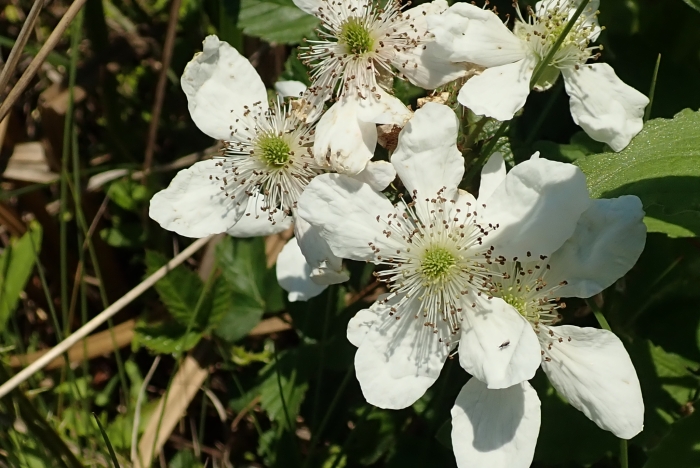Sand Blackberry
(Rubus cuneifolius)
Sand Blackberry (Rubus cuneifolius)
/
/

Peter Warren
Public Domain
Image By:
Peter Warren
Recorded By:
Copyright:
Public Domain
Copyright Notice:
Photo by: Peter Warren | License Type: Public Domain | License URL: http://creativecommons.org/publicdomain/zero/1.0/ | Rights Holder: Peter Warren | Publisher: iNaturalist | Date Created: 2018-11-09T11:47:18-08:00 |



















































Estimated Native Range
Summary
Rubus cuneifolius, commonly known as Sand Blackberry, is a deciduous subshrub native to sandy soils of open pine woodlands, coastal plains, and scrub areas in the Southeastern USA. It typically grows to a height and width of 1-3 feet (0.3-0.9 meters). The plant features arching canes with sharp thorns and compound leaves. During the spring and early summer, it produces small, white to pink flowers that are followed by edible blackberries, which are attractive to both humans and wildlife.
Sand Blackberry is valued for its fruit production and is used in home gardens for wildlife habitat enhancement and naturalized areas. It is a hardy plant that tolerates poor soils and drought conditions, making it suitable for erosion control on sandy sites. In cultivation, it prefers full sun to part shade and is adaptable to a variety of soil types, provided they are well-drained. While it can be beneficial in its native habitat, it is potentially invasive in some regions outside its native range, and gardeners should check local regulations before planting.CC BY-SA 4.0
Sand Blackberry is valued for its fruit production and is used in home gardens for wildlife habitat enhancement and naturalized areas. It is a hardy plant that tolerates poor soils and drought conditions, making it suitable for erosion control on sandy sites. In cultivation, it prefers full sun to part shade and is adaptable to a variety of soil types, provided they are well-drained. While it can be beneficial in its native habitat, it is potentially invasive in some regions outside its native range, and gardeners should check local regulations before planting.CC BY-SA 4.0
Plant Description
- Plant Type: Shrub
- Height: 1-3 feet
- Width: 1-3 feet
- Growth Rate: Moderate
- Flower Color: White
- Flowering Season: Spring
- Leaf Retention: Deciduous
Growth Requirements
- Sun: Full Sun, Part Shade
- Water: Medium
- Drainage: Fast, Medium
Common Uses
Bee Garden, Bird Garden, Border Plant, Butterfly Garden, Edible*Disclaimer: Easyscape's listed plant edibility is for informational use. Always verify the safety and proper identification of any plant before consumption., Erosion Control, Fragrant, Hummingbird Garden
Natural Habitat
Native to sandy soils of open pine woodlands, coastal plains, and scrub areas in the Southeastern USA
Other Names
Common Names:
Scientific Names: , Rubus cuneifolius, Rubus chapmanii, Rubus dixiensis, Rubus cuneifolius var. subellipticus, Rubus cuneifolius var. spiniceps, Rubus cuneifolius var. angustior, Rubus cuneifolius var. cuneifolius,
GBIF Accepted Name: Rubus cuneifolius Pursh